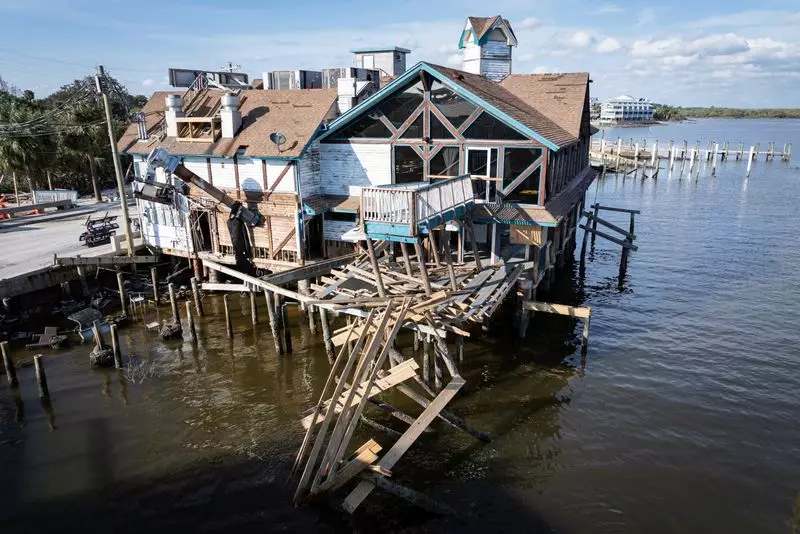In the early hours of Sunday, the Southeastern United States woke up to the grim realities left in the wake of Hurricane Helene. As the hurricane swept through the region, it penned a tale of ruin, marked by extensive power outages that affected millions, obliterated infrastructure, and engendered catastrophic flooding from Florida all the way to Virginia. Reports indicate that the storm resulted in at least 60 confirmed fatalities, a figure that officials, including those in South Carolina, Florida, Georgia, North Carolina, and Virginia, expect may rise as investigations continue into remote areas still grappling with the storm’s devastating impact. The economic ramifications of this disaster are staggering, with damage estimates fluctuating wildly between $15 billion and more than $100 billion, highlighting the hurricane’s unparalleled force.
In the face of such destruction, the federal government and local agencies have initiated prompt response operations. FEMA Administrator Deanne Criswell emphasized the significant challenges ahead, pointing out that critical water systems, transportation routes, and communication networks sustained severe damage. As recovery efforts gear up, she assured the public that while the government possesses the necessary resources, the path to restoration would be fraught with complications.
As of Sunday, a staggering 2.7 million customers were without power—a 40% reduction from earlier reports, yet a sizeable number remained in the dark, confronted with both physical and emotional tolls of the storm. The winds and rain from Helene expanded hundreds of miles inland, requiring extensive recovery measures for affected populations. Following a historic storm surge that swept through central Florida, communities find themselves engaged in a painstaking journey towards rebuilding not just structures, but lives as well.
In Florida’s Gulf Coast, the destruction was particularly profound, defining the landscape with poignant stories of loss. Local officials reported a death toll of 11 in Florida alone, with communities such as Perry suffering from storm surges that reached unprecedented heights of 15 feet—storm surge levels unmatched in recent years. Residents like Charlene Huggins, who reminisced about generations of family memories now buried under the debris of her home, capture the emotional weight of the storm’s impact. The resilience of communities like hers stands as a silver lining amidst the deluge of destruction.
High in the mountains, North Carolina faced its own calamities as Helene poured rain over its landscapes, with nearly 30 inches reported to have fallen on Mount Mitchell, a statistic that evokes both awe and dread. Transportation officials flagged more than 400 roads as closed, contributing to a sense of isolation in the wake of the storm. The damage reports paint a harrowing picture of towns submerged under layers of mud and debris, with lives irrevocably changed.
State authorities confirmed two fatalities in North Carolina as part of the hurricane’s toll, a reminder that the storm’s deadly footprint was not limited to coastal areas. As communities face washed-out downtowns and uprooted trees, the urgent need for both emergency response and rebuilding resources becomes increasingly critical.
In the midst of this crisis, President Joe Biden assured the nation that every possible effort would be made to support affected communities in their recovery journey. His commitment reinforces the need for coordinated action, as local authorities join search-and-rescue operations alongside the federal agencies. As the Army Corps of Engineers steps in to evaluate and restore vital water systems, the attention turns to long-term recovery efforts that must encompass infrastructure repairs and community rebuilding.
South Carolina stands as a tragic focal point within the larger narrative, with 24 recorded deaths attributed to the storm, many caused by falling trees—a grim reminder of nature’s fury. Neighboring Georgia also experienced profound losses, with Governor Brian Kemp announcing 17 deaths, including children, as communities navigate their way through such immeasurable grief.
As the Southeast embarks on the monumental task of recovery, the stories of loss and resilience emerge as both sobering and inspiring. The persistent human spirit, exemplified by residents digging through the wreckage of their homes, reflects a profound determination to heal and rebuild. While the economic and emotional costs of Hurricane Helene are still unfolding, the collective effort to restore communities speaks volumes about the strength of those affected. The journey to recovery may be complex, but it is one underscored by the unwavering hope for brighter tomorrows in the Southeastern United States.

